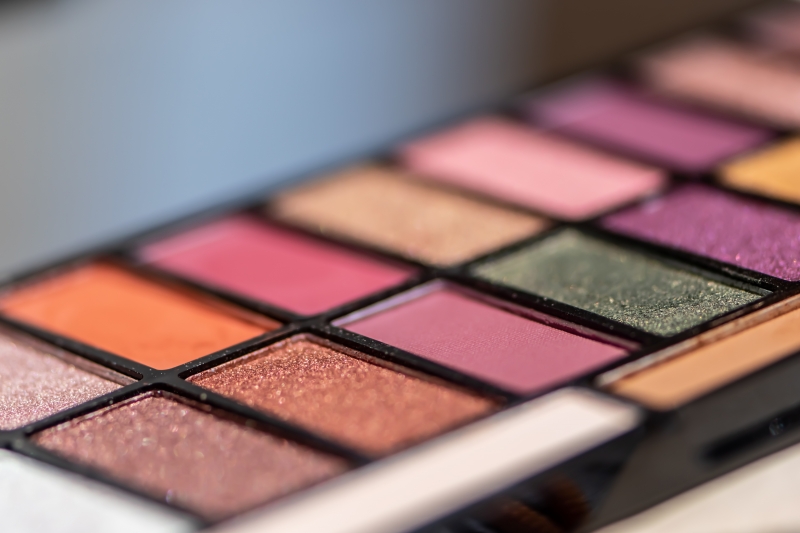What products did you use this morning as you got ready for your day? Shampoo? Soap? Deodorant? Makeup? Likely at least one of these, along with other personal care products. The Environmental Working Group found that women in the United States use an average of 12 personal care products each day, and men an average of six. And, while many of the chemicals in these products likely pose minimal risk, some chemicals found in personal care products have been linked to cancer, reproductive harm, and other health problems. Further, women of color face disproportionate impacts. On average, women of color use more beauty products than white women, and the beauty products they use disproportionately expose them to hazardous ingredients.
We spoke with Dr. Neha Pathak, Medical Editor and writer with WebMD, on a recent People Places Planet Podcast* episode to learn more about these risks and disproportionate exposures. She walked us through the outdated legislation that regulates the industry, different hazardous chemicals found in personal care products and their effects, and how women of color are being disproportionately affected.
The European Union and several countries have banned or restricted over 1,400 ingredients in cosmetics and personal care products. In contrast, the United States Food and Drug Administration (FDA) has only banned or restricted 11 ingredients. This is largely because the primary laws regulating the industry—the Federal Food, Drug, and Cosmetic Act of 1938 and the Fair Packaging and Labeling Act of 1967—provide minimal regulation and have not been updated to provide any regulatory framework for more recently developed chemicals. Consequently, the industry primarily self-regulates; an industry review group studies the safety of a chemical, and then, if the group decides it is safe, the chemical is incorporated into personal care products. Under this process, parabens, phthalates, formaldehyde and its derivatives, per- and polyfluoroalkyl substances (PFAS), and more are present in personal care products in the United States despite being linked to health concerns and being banned in the European Union and other countries.
In the United States, these chemicals are found in various products and pose a variety of health concerns. Parabens—found in products such as deodorant and hair care and shaving products—and phthalates—found in products such as body wash, lotions with fragrance, and color cosmetics—are both endocrine disrupters. Endocrine disrupters are chemicals that interfere with hormones and hormonal function and can lead to reproductive harm, cancer, and developmental disorders. Formaldehyde is a known carcinogen, and its risks are linked to cancer. Formaldehyde or its derivatives are sometimes used in products that are paraben-free, and can be found in hair care products like gels, smoothing products, and shampoos, and in other products such as body soap and wash. PFAS are used in personal care products for their durability and water-resistance. They are often found in mascara and other products advertised as water- or tear-resistant. PFAS have been linked to liver and kidney damage, immune system problems, and development and reproductive health problems.
Further, these chemicals can be hard to identify on ingredient labels, making it challenging for consumers to know what they are being exposed to. In an effort to compile information about possible health harms associated with chemicals, and to dissect elusive ingredient labels so consumers can make informed choices, the Environmental Working Group maintains the Skin Deep database of cosmetic products, their ingredients, and potential health concerns.
 While these chemicals can affect anyone using personal care products, toxics in personal care products is an environmental justice issue. People of color, and specifically women of color, are disproportionately affected. White-centric, Western standards of beauty can influence product consumption, leading women of color to purchase specific products, such as hair relaxers and skin lighteners, which are known to often contain hazardous chemicals. Additionally, certain products are marketed to women of color, and specifically Black women. In 2016, over 1,000 products were marketed to Black women, and fewer of these products were made without hazardous ingredients compared to products marketed to white women. Further still, cumulative impacts can put women of color at greater risk because of disproportionate environmental exposures to toxic chemicals. Dr. Pathak notes that including environmental justice issues, beyond those that are rooted in geography, is critical for addressing disproportionate burdens.
While these chemicals can affect anyone using personal care products, toxics in personal care products is an environmental justice issue. People of color, and specifically women of color, are disproportionately affected. White-centric, Western standards of beauty can influence product consumption, leading women of color to purchase specific products, such as hair relaxers and skin lighteners, which are known to often contain hazardous chemicals. Additionally, certain products are marketed to women of color, and specifically Black women. In 2016, over 1,000 products were marketed to Black women, and fewer of these products were made without hazardous ingredients compared to products marketed to white women. Further still, cumulative impacts can put women of color at greater risk because of disproportionate environmental exposures to toxic chemicals. Dr. Pathak notes that including environmental justice issues, beyond those that are rooted in geography, is critical for addressing disproportionate burdens.
In order to eliminate the disproportionate toxic chemical exposures women of color experience, and to reduce the chemical burden of everyone using personal care products, further regulation—in addition to other initiatives including breaking down Western beauty standards—is imperative. In some cases, gradual progress is being made. California passed the Toxic-Free Cosmetics Act in 2020, banning 24 chemicals from cosmetic and personal care products. The banned chemicals include formaldehyde, certain parabens, and PFAS. Several major U.S. retailers have also made strides to ban products containing certain ingredients. However, more work is imperative, and consumers deserve safe personal care products.
*The People Places Planet Podcast is the official podcast of ELI and allows listeners to gain insight on some of the thinking behind ELI's work. You can find most recent episodes by visiting https://www.eli.org/podcasts or listening wherever you get your podcasts.
